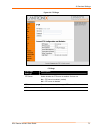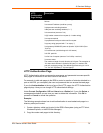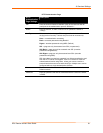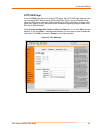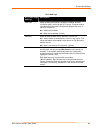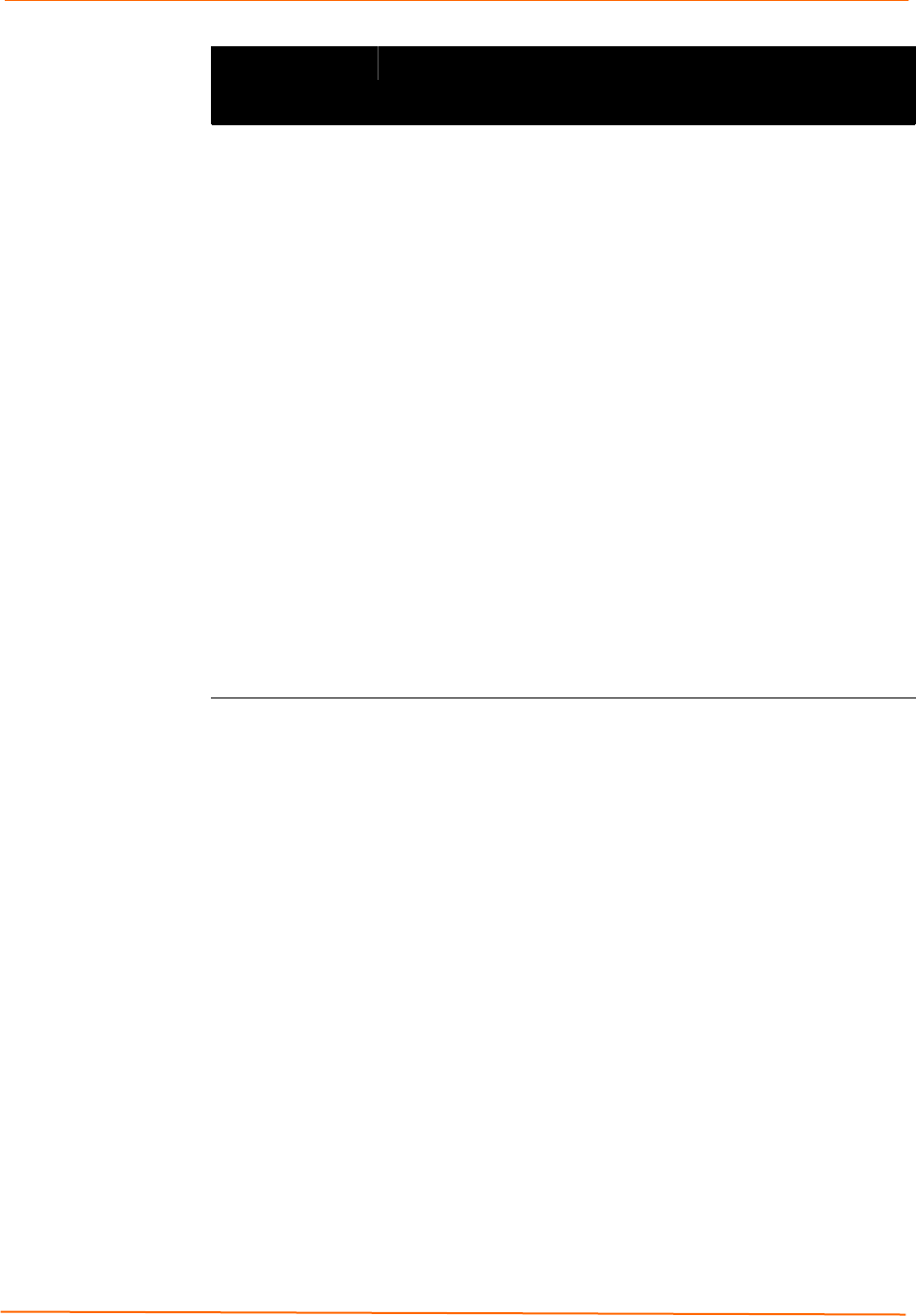
8: Services Settings
EDS Device Servers User Guide 79
HTTP
Configuration
Page Settings
Description
Log Format Enter the format of the HTTP log. The log format directives are as
follows:
%a remote IP address (could be a proxy)
%b bytes sent excluding headers
%B bytes sent excluding headers (0 = '-')
%h remote host (same as '%a')
%{h}i header contents from request (h = header string)
%m request method
%p ephemeral local port value used for request
%q query string (prepend with '?' or empty '-')
%t timestamp HH:MM:SS (same as Apache '%(%H:%M:%S)t' or
'%(%T)t')
%u remote user (could be bogus for 401 status)
%U URL path info
%r first line of request (same as '%m %U%q <version>')
%s return status
The maximum length for each directive is 64 bytes. The exception is
'%r' where each element is limited to 64 bytes (i.e. method, URL
path info, and query string). The default log format string is: %h %t
"%r" %s %B "%{Referer}i" "%{User-Agent}i"
HTTP Authentication Page
HTTP Authentication allows you to require usernames and passwords to access specific
web pages or directories on the EDS's built-in web server.
For example, to add web pages to the EDS to control or monitor of a device attached to a
port on the EDS, you can specify the user and password that can access that web page.
If you click Authentication at the top of one of the HTTP pages, the HTTP Authentication
page displays. Here you can change HTTP authentication settings.
Under Current Configuration, URI and Users have a Delete link. If you click Delete, a
message asks whether you are sure you want to delete this information. Click OK to
proceed or Cancel to cancel the operation.
Example:
The following example shows how to add authentication to user-loaded web pages in a
directory called port1control.
1. Create a directory called port1control in the EDS's files system (using an FTP client,
Windows Explorer, or the EDS Web Manager).
2. Copy the custom web pages to this directory.





